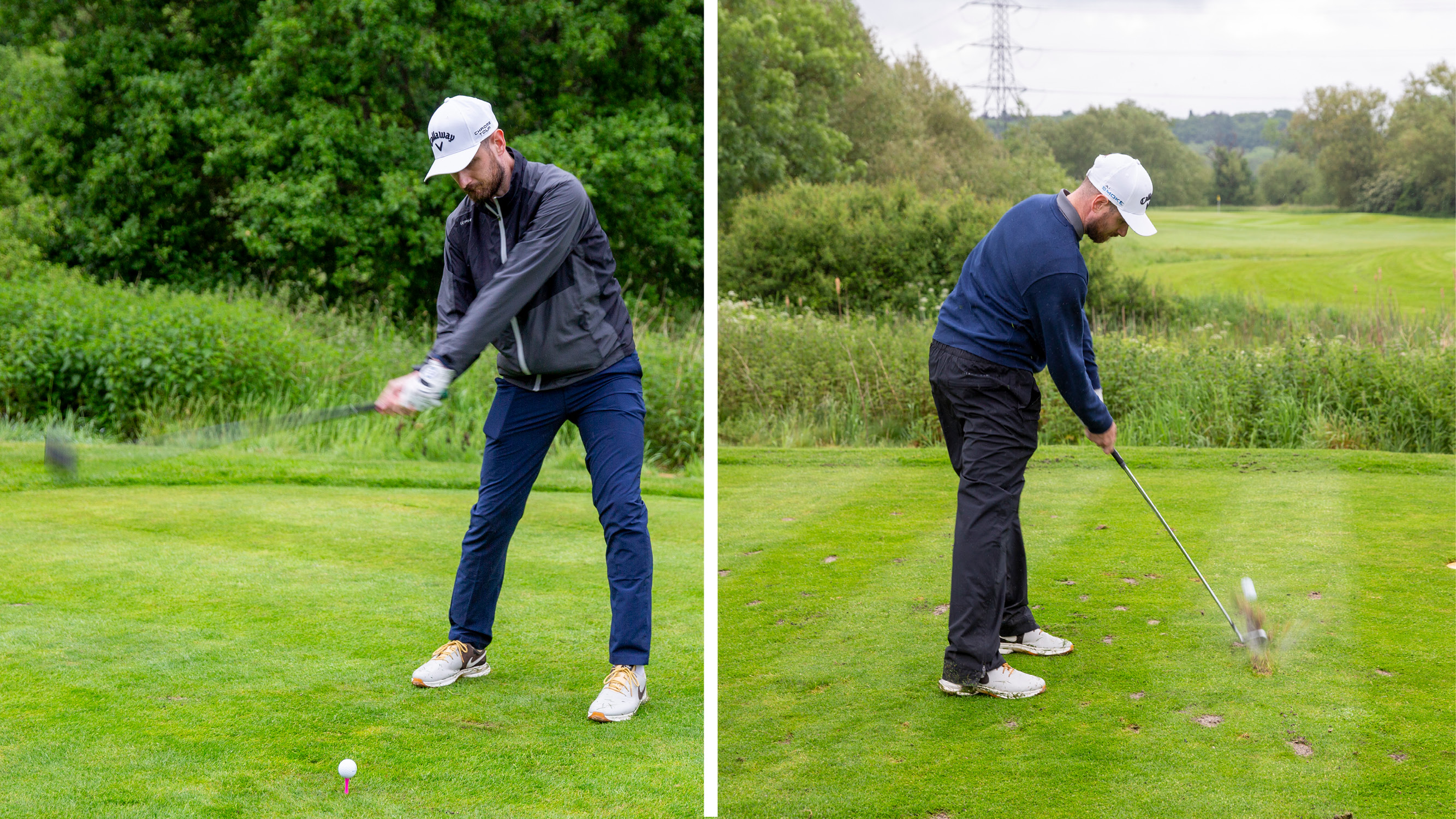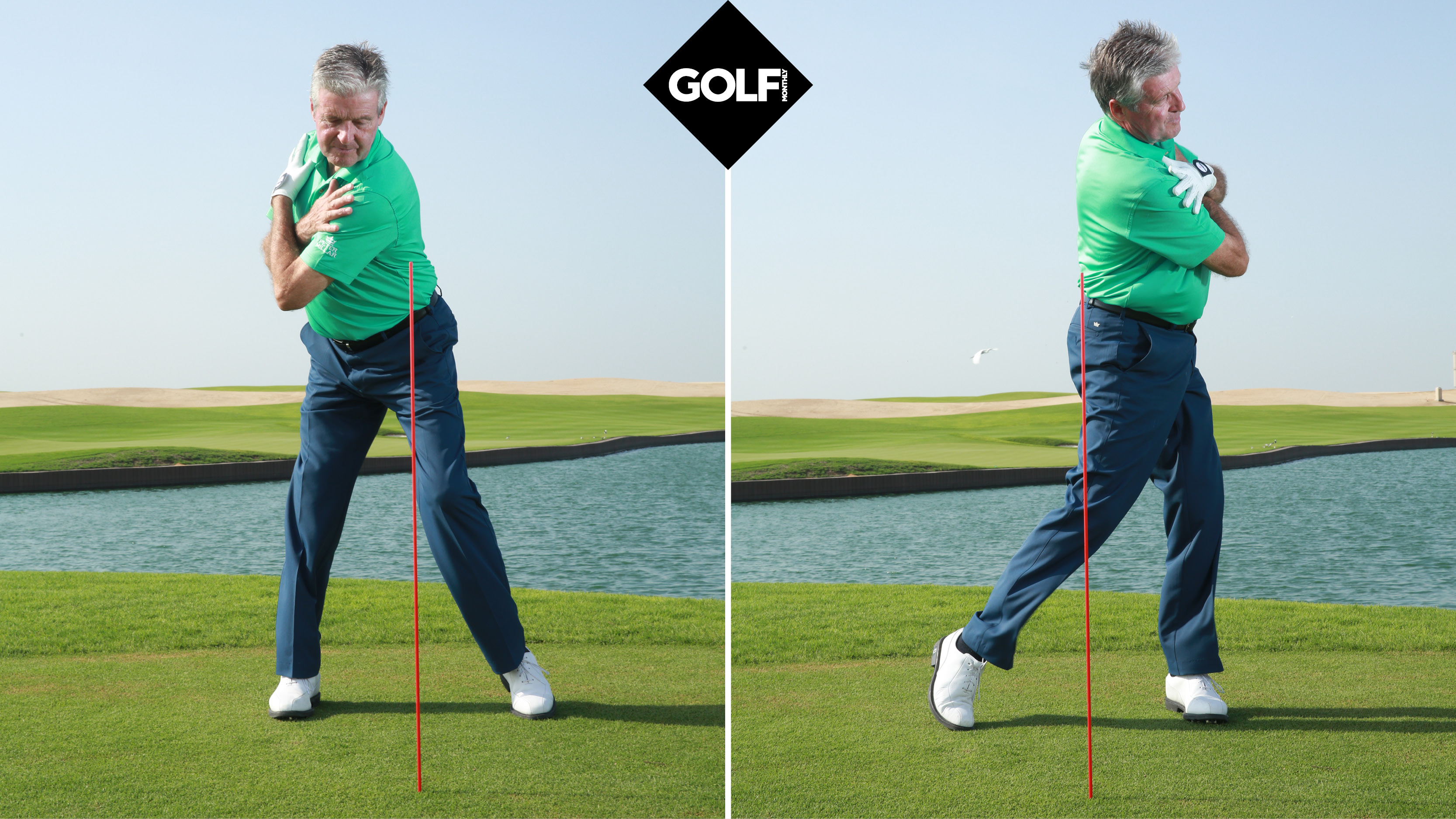How To Stop Coming Over The Top
Want to know how to stop coming over the top in your golf swing? Golf Monthly Top 50 Coach Andrew Reynolds has the answer and some useful tips...


Coming over the top in the golf swing is a real issue when starting the downswing, and can cause all manner of misses including a pull shot and the dreaded shank. Having that negative thought lurking in the back of your mind can also seriously affect your confidence on the golf course, so without the right expert tips you could be staring down the barrel at big scores.
Fortunately, we have enlisted the services of Golf Monthly Top 50 Coach Andrew Reynolds. In this video and article, Andrew explains the main causes of this destructive movement and shares his top tips to help you stop coming over the top...
Coming over the top with your swing or cutting across the ball is never going to lead to consistently positive results, and can often lead to two way misses and erratic performances. The margin for error when doing this is so fine, that hitting the ball straight and generating optimal power is likely to be a rare occurrence.
Fixing the problem is achievable, but there is no magic wand that can improve your strike without a little hard work. The first thing to check would be how far you stand from the golf ball, and these drills will give you a nudge in the right direction...
Weight transfer
A common cause of an over-the-top move is golfers failing to transfer their weight effectively. This leads to a reverse pivot, meaning the weight stays on the left leg throughout the backswing and shifts onto the right through impact. With a driver in hand, the consequences of this sequence can be particularly disastrous.

With your arms across your chest, hone the feeling of shifting your weight back and through
A simple drill to help encourage a better move is to set up without a club and place your hands across your shoulders. From there, turn back and feel your left shoulder moving across to your right knee, and then your right shoulder to your left knee as you swing through.
Do this a few times and then try to recreate the feeling with a club in your hands. It’s not going to instantly fix the path of your swing, but over time, it should allow you to deliver club to ball on the right line more regularly.
Subscribe to the Golf Monthly newsletter to stay up to date with all the latest tour news, equipment news, reviews, head-to-heads and buyer’s guides from our team of experienced experts.
Left hip bump
Swinging over the top isn’t only for those with a poor backswing. There are many golfers who shift their weight nicely and get the club into a good position only to pull their left hip back violently, which throws the club outside.

Starting the downswing by shifting the left hip laterally will get the club in a better position
So another thing that will help is to feel a slight lateral movement with the left hip to begin the downswing. As demonstrated, putting an alignment stick in the ground can work as a good feedback tool. What this will do is enable the hands and arms to shallow out and create a more neutral and powerful swing plane.
Seve’s solution
Finally, one of the simple drills Seve used to rely on when he felt he was struggling with this kind of problem – albeit to a lesser extent – was to take his address position and then lift the club up to the point where it was hovering at the same height as his knees.

Try Seve's baseball-style remedy to stop swinging over the top
From there, he would swing around his body on that plane to encourage the feeling of attacking the ball from the inside and releasing the hands better. It’s something we’ve also seen Miguel Jimenez do for many years when he is practising.
The great thing about these drills is that they aren't overly technical. They promote feels in order to help you gradually find better positions throughout the swing, rather than forcing the issue unnaturally.
Fixing a swing flaw is a marathon, not a sprint. It can take some of the best players in the world years to fully ingrain something they're working on, so try these drills at the range and start your journey to better golf.

Location: Royal Cinque Ports
Andrew was appointed Head Professional at Royal Cinque Ports in 1978, aged just 23. He is only the sixth professional in the club's 125-year history. From 2010 to 2013, he was lead coach for the Mens England “A” squad and helped work with many established European Tour players. Andrew also enjoyed success on the European Senior Tour, most notably his top-20 finish in the Senior Open Championship at Turnberry.
Teaching philosophy:
Different golfers have different aims, so players' hopes must be discovered before a ball is struck. The player is buying our experience to take them on a journey which will, hopefully, exceed their expectations. I try to keep the learning experience fairly light to keep the player relaxed and make the time together enjoyable for us both. We generally need to ‘de-clutter’ players' golfing brains and put a filter system in place to help people understand the important factors.
Most significant influences:
Ernest Jones’s book, ‘Swing the Clubhead’, who stressed that if your set up was neutral, balanced and correct, all body actions were responsive to the club swinging. Peter Thomson, too. He chatted to Henry Longhurst, whom he allowed to explain his simple thinking - set up squarely, point the club at the target, take it away from the ball on the same path that the club attacks the ball on, then from the top of the backswing just bring it back to the ball. Both Jones and Thomson understood the difference between cause and effect. Modern technology allows us to analyse the golf swing in a very technical manner, which has now proved that both were ahead of their time in making a golf swing a simple exercise. We must remember that it’s the clubhead that we are swinging.
Advice for practice:
A structured and disciplined practice session is the only way to develop your golfing skills to the maximum. Always make sure that your setup is perfect before any swing begins - it’s pointless to work on a swing change with an inconsistent and changeable setup. A different setup means a different swing.